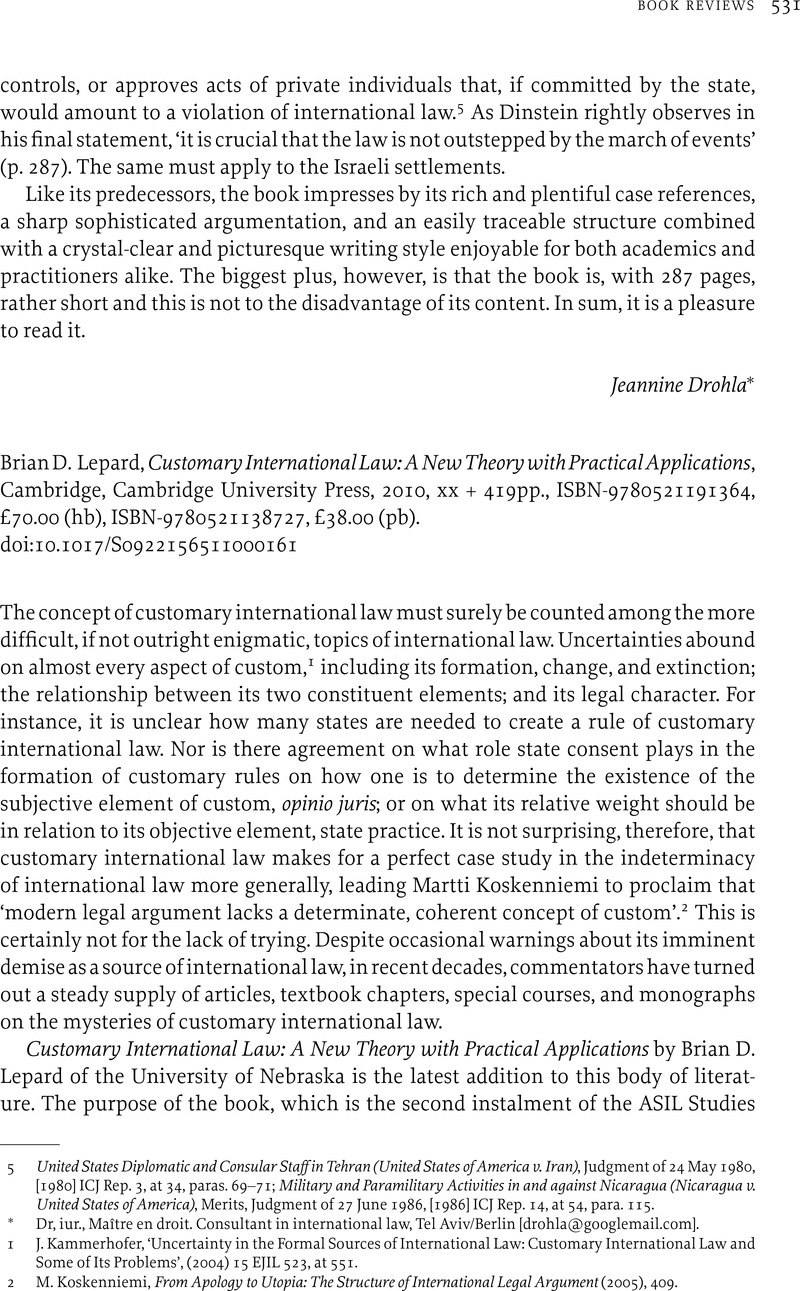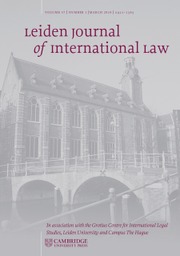No CrossRef data available.
Article contents
Brian D. Lepard, Customary International Law: A New Theory with Practical Applications, Cambridge, Cambridge University Press, 2010, xx + 419pp., ISBN-9780521191364, £70.00 (hb), ISBN-9780521138727, £38.00 (pb).
Review products
Published online by Cambridge University Press: 06 May 2011
Abstract

- Type
- BOOK REVIEWS
- Information
- Copyright
- Copyright © Foundation of the Leiden Journal of International Law 2011
References
1 J. Kammerhofer, ‘Uncertainty in the Formal Sources of International Law: Customary International Law and Some of Its Problems’, (2004) 15 EJIL 523, at 551.
2 M. Koskenniemi, From Apology to Utopia: The Structure of International Legal Argument (2005), 409.
3 In his famous article on instant custom, Bin Cheng suggested that ‘international customary law has in reality only one constitutive element, the opinio juris’; see Cheng, B., ‘United Nations Resolutions on Outer Space: “Instant” International Customary Law?’, (1965) 5 Indian Journal of International Law 23, at 36Google Scholar. Maurice Mendelson, by contrast, sees ‘no particular reason to insist on proof of the presence of opinio juris’ in clear-cut cases; see M. H. Mendelson, ‘The Formation of Customary International Law’, (1998) 272 RdC 155, at 292.
4 F. L. Kirgis, ‘Custom on a Sliding Scale’, (1987) 81 AJIL 146; for a more refined, but similar, approach, see A. E. Roberts, ‘Traditional and Modern Approaches to Customary International Law: A Reconciliation’, (2001) 95 AJIL 757.


